The month I entered and got into the Big Sur marathon, I ran just twice. The month after, I ran three times. At the time, E and I were preparing for a move, mentally and physically, and running and other healthy habits are always the first thing to go when I’m busy and under stress. So when it came time to train, I was starting from level zero in all ways except one: I knew without a shred of doubt that I could run a marathon, because I already had.
I thought at first that I would use the same training book as I had for my first marathon. Then, on a weekend trip to New Hampshire, I came across another relic from the late 90s – early aughts at a library book sale: The even-cheesier title MARATHON: You can do it! by Jeff Galloway. (The Non-Runner’s Marathon Trainer was published in 1998 and the Galloway book in 2001, but both were a reflection of—and contributor to—the growing popularity of running and the marathon as the everyman’s Big Goal.) The Galloway plan was different in several key ways: It was longer, 26 weeks instead of 16; it called for just three runs a week instead of four (I was supposed to cross train on three of the other days but found working out six days a weeks was just too much for me, so I skipped the majority of those); it ramped up to higher mileage (the longest run was 26 miles, instead of 18); and it required slowing down and taking regular walk breaks on long runs.
I trained for six months, through the cold, dark, windy winter. In the days leading up to our flight to California, I flirted with the idea of crashing out because I had forgotten that the training plan actually called for three short runs the week of the marathon instead of two, and I had already missed one. But sanity and common sense prevailed: I had stuck with the plan, at least the running part, skipping only a handful of mid-week workouts due to illness or malaise. It was the longest I had ever maintained a weekly running habit in my life, and I felt at least as strong as I had going into Mount Desert Island. And I thought planning for and practicing walk breaks was going to pay off: Big Sur is a hilly course with almost 2,200 feet of total elevation gain (according to the race organizers; my watch only recorded 1,780 feet and I don’t know why there is such a big discrepancy). It’s bisected by a monster two-mile long climb up to Hurricane Point beginning at mile 10, followed by rolling hills all the way to the end. I had read that plenty of people, especially those around my ability level, walked parts of the race, whether they planned to or not. Galloway’s pitch is that if you give your running muscles breaks early and often, that they will recover and function better over the entire course, and especially at the end when other runners are fatigued and slowing down.
But perversely, having a game plan filled me anxiety. When I ran Mount Desert Island, I went into it blind, without a goal beyond finishing in the allotted time (six and a half hours), and preferably not last. Without a watch, I paced myself entirely by feel: Can I run like this forever? Ok, keep going. It was a conservative approach but it worked for me.
For Big Sur, I was planning on taking frequent walk breaks: running for approximately four minutes and walking for one, with shorter or no walk breaks on the downhills and longer breaks, if I needed them, on the climbs. (I had tried different ratios but all the others required doing more mental math than I wanted; stopping on fours and nines and going on fives and zeros was just easiest.) I would need to check my watch regularly, so I would know my pace at all times, which seemed daunting. And, of course, if I wanted to beat my previous time, I would have to run faster, when I ran, to make up for the walk breaks.
I was hesitant to commit to that goal; Mount Desert Island was hilly, but Big Sur was hillier, and windier, and we’d had perfect weather in Maine, and I couldn’t count on that. Also, lots of people stop and take photos during Big Sur, or linger with the famous piano player stationed near Bixby Bridge. Did I want to run as fast as I could, or did I want to enjoy myself and soak it all in? I also, very plainly, didn’t want to set a goal I might miss. I didn’t want to fail. Because failing sucks, and because I didn’t want to taint what should be an accomplishment regardless.
I knew my spiraling had gone too far when I started voicing these concerns to someone on Bluesky who responded to one of my posts about the Boston marathon’s climate footprint. Jessica, cringe! She doesn’t care! You can inflict these incessant thoughts on E, within reason, but not strangers on the internet. I forced myself to leave my post up, unliked and unreplied to, as a kind of punishment.
It’s also worth mentioning that Big Sur has a strict six-hour cut-off time so that Highway 1 can be reopened to traffic. If runners can’t reach mile 13.2 by 10:05 am or mile 21.2 by 11:50 am, they’re told to stop and transported back to the start line by bus. Based on my performance at Mount Desert Island, which I ran in 4:55:05, I was reasonably confident I could finish under six hours. But one can never be 100 percent sure, you know? I had also finished my longest training run, 26 miles—with .2 miles of walking tacked on at the end just to log a “marathon” on Strava—in just under six hours. I did that, as Galloway instructed, about two minutes per mile slower than I thought I could, taking frequent walk breaks. But when I finished, exhausted and beat, struggled to imagine going any faster. In fact, I struggled to comprehend how I had already done that any faster.
In the weeks leading up to the race, I sought out race reports and came across this dispatch, for Runner’s World, of all places, by someone who DNFed (did not finish) Big Sur, which filled me with anticipatory dread. But he admitted he didn’t train as well as he should have, and I had. It couldn’t happen to me—right?
After E and I checked into the expensive hotel in Monterey (which I had reserved because it was the cheapest of those with blocks of rooms set aside for marathoners; because it was close to a bus pick-up location; because it had a generous cancellation policy, so if I got injured or couldn’t run for any other reason, I would only be out the race fee; and because it had a hot tub), we decided to drive down towards the water for my easy, 30 minute shakeout jog. I padded out my outfit with the various gels and chews I planned to take for the race, just so I could get a sense for exactly how they would feel and where they would all go. (I had never been able to do a full race-day dress rehearsal in New York because it was too cold, and because the water fountains weren’t on so I did all my long runs with a running vest, and I still couldn’t entirely now because it was too chilly to wear a tee on an easy jog.)
It was early evening and still light out, but in New York, already half past nine, so it felt late. I had been trying to stay on East Coast time so waking up at 3:15 am that Sunday would feel more like 6:15 am, but without much luck.
Before we started, we gingerly walked out on the beach to look around, and spotted something in the water—either a seal or a sea lion, it was too far away to tell. I was paranoid about even one grain of sand working its way inside my shoe and wreaking havoc on my feet over 26.2 miles. Then we ran out on the pedestrian-bike path lined with fragrant eucalyptus trees. We walk-jogged over the boardwalks up on the dunes to look out over the bay at every opportunity. It was lovely and peaceful, although my tummy was still flip flopping with nerves.
Just thirty-three hours later, I was on a bus to Big Sur.
I boarded early and took a window seat, on the narrow hard bench meant for much smaller bottoms. The man who eventually sat next to me turned out to be one of the rarefied group of “Boston to Big Sur” runners, having run the Boston marathon just six days before. He was from London, and perhaps I sounded immature because at one point he asked what I did in New York and if I was still in school, and I had to say, “Oh! You must think I’m a lot younger than I really am. I’m 35—and a climate journalist.” But, I prefer to think my short bangs and the dark bus conspired to merely make me appear very young.
We talked about how wonderful congestion pricing is, now that New York has it (London first instituted a congestion charge in 2003!) and how everyone in the UK is trying to unload their Teslas and the waiting lists for other electric vehicles is very, very long. We talked about the races he had run with his daughters (including a half-marathon on the same day he ran a full marathon!) and the many, many races he had coming up on his schedule this year. It was a nice conversation, and it kept me from getting too nervous. In fact, I was remarkably calm, all things considered.
The nerves reasserted themselves a short-time later, as I debated (standing in the cold misty morning) what to wear. I had both a long sleeve tee and a short sleeve tee with me. The Dress My Run website (which I had checked in the hotel room the night before) had suggested short sleeves for all hours but one that morning, when it suggested long sleeves. I was cold and wet at the moment and inclined to wear long sleeves, but dreaded feeling too hot while running. I do not perform well when I’m too hot. The New Hampshire runners I befriended were wearing long sleeves, and the woman was in tights. That settled it: I stripped off to my sports bra and swapped short sleeves for long, and pinned my bib to my shirt. Then I saw another woman next to us in tight shorts and a singlet. Was I making a terrible error? I swapped shirts again, carefully unpinning and repinning my bib to my front. Better to be cold than hot.
Eventually, the thousands of runners began lining up at the start line. Approximately 4,500 people take on the marathon distance at Big Sur every year, and thousands more run the relay or one of the shorter distances. (The 11-Miler was originally called the “Walk” and the 21-Miler the “Power Walk.”) I was towards the back of the third and last group to start at first, and could see the 5:50 pacer nearby. No good—I wanted to be closer to the 5:00 pacer. So when we began moving up after Corral B was off, I scooted my way along the edge closer to the front, dropping the wrapper for the energy stroopwafel I stuffed in my mouth at the last minute in a bin as I went.
One thing I learned from my first marathon is for god’s sake don’t start running until you cross the start line. The first miles can be the warm-up; don’t waste energy. (This doesn’t apply to faster, more competitive runners.)
I felt fairly calm setting out, nerve-y but confident. It took an enormous amount of willpower to pull towards the side and to stop to take a walk break just four minutes into the race. It felt so wrong, so vulnerable. I felt horribly exposed and laid bare to the other runners, as well, and subject to their judgment and derision. I reassured myself I was saving my strength for later, walked for 30 seconds, tried to focus on the trees and the atmosphere, and allowed myself to start jogging again. There was a large cluster of runners ahead of me with a pacer at the center; I think it was the 5:15 group.
As I feared, the near-constant checking of the watch did make it harder to relax, observe, and absorb my environs. It was a kind of tunnel vision. But frankly I was also preoccupied by thinking about how very wet I was—the misting had intensified and could now well and truly be called rain. My clothing was plastered to my flesh by wind and water, and I thought I could feel a bit of chafe between my thighs, where the fabric clung, which isn’t something I usually have to deal with. I had trained a bit in the rain, but not in this exact outfit, and I fervently hoped the chafing would just—stop. (Miraculously, it did.) I also had to pee shortly after we started, and I thought about having to pee for at least ten miles before I finally passed an aid station with a reasonably short bathroom line. I was not going to miss beating my Mount Desert Island time because of a long portapotty wait! So I held it.
The aid stations were irregularly placed according to the geography of the road, but roughly every two miles, and I slowed down to a walk to drink at every one (even when I still had to pee). I had one of my energy gels approximately every 45 minutes, but still found myself wishing I had eaten more for “breakfast” and was extra grateful for my purloined banana. At some point my stomach started growling with hunger, which couldn’t be a good thing.
My legs were a little twinge-y from the start, especially my downhill muscles, which made me nervous. But in general, I felt great, if sometimes rather cold and bedraggled, especially when I took walk breaks. I remember eyeing some of the layers runners ahead of me had dropped by the side of the road, and thought if it came to it I could just pick one of their sweatshirts up.
I had passed the big pace group ahead of me. For a while I was running with the 5:00 pacer, sometimes a bit ahead, sometimes a bit behind. I lost him when I finally stopped to pee but caught up and passed him sometime after Hurricane Point, the big two-mile climb near the midpoint of the race, followed by a long downhill, which I thundered down like an avalanche at a blistering (for me) 8:40-minute per mile pace. In fact, it was the fastest mile I’ve ever logged on my Garmin. I had some niggling doubts about taking the downhills so hard. I could feel my quads bulging and straining with the effort of catching my weight and propelling me forward, but I wanted to make up for the slow climbs! (My slowest mile of the race was 13:29 minutes, which I think reflects both a challenging uphill and my bathroom break.)
When I realized, much later in the race, that I had caught up to the 5:00 pacer from Corral B, who started before me, I was thrilled! And a bit regretful. Maybe I should have been more ambitious about my expected race time, so I wasn’t in the last group to start? I gave my expected finish time as 5:00. I figured it was best to be realistic, and that it’s more psychologically beneficial to pass people than to be passed, but I also ended up doing a lot more bobbing and weaving between runners than I might have otherwise. Also, Corral C didn’t have a 4:50 or 4:45 pacer. Could I have gone faster if I had been able to follow those runners?
After I put in my headphones, somewhere between mile 18 and mile 20, I can’t be sure, I sped up. I didn’t feel like I actually needed it, but I didn’t want to have carried my phone in my sports bra all this way not to use it, and I suspect it did give me a little extra juice. Whether it was the music, the six months of training, the early and often walk breaks, I was, in fact, able to pick up my pace through the endless rolling hills of the Carmel Highlands, and ran every mile after mile 22 faster than 11 minutes. This is in pretty sharp contrast to Mount Desert Island, where I ran a more consistent pace throughout, averaging somewhere between 11:09 and 11:38, but that 11:38 was over the last six miles, when I could feel myself running out of steam. (Also, without a watch, those times are based on my chip times taken at miles 13.1, 20, and the last 10K, so I can’t be sure what my exact per mile pace was throughout. But, I know there was less variability. I never ran an 8:40 in that race.)
I think one sign that I may not have that dog in me is that when I realized I was almost certainly going to beat my Mount Desert Island time, my instinct was to let myself slow down, which I had to fight, not entirely successfully.
The last 90-foot hill at mile 26 came as an unwelcome surprise, but I got over it, and just like before, E was there at the end, leaning out over the fence to wave me in, and I was smiling and pumping my arms all the way to the finish line.
And the most wonderful thing is I never wished I was anywhere else. In spite of the wind and the rain, I was always glad to be running, grateful to be there, confident and strong and assured, solid and unwavering. I couldn’t have asked for a better race, really. Oh, and my final time was 4:51:32, about three and a half minutes faster than my previous time—which isn’t a lot, but it’s not nothing!
Afterwards I went with E and my mom to get my post-race beer. I pulled on the layers they had brought for me and swapped my shoes for sandals, noting that there was a giant throbbing blister sticking out from underneath one of my toenails. I thought I had felt something sharp and uncomfortable there! Wet shoes and steep downhills don’t mix.
I stood with them drinking while they announced the age group winners, thrilled to hear the name of our New York acquaintance who ran the race and placed fourth in his age group, and 16th overall! And it was his first marathon! The next best thing to being fast oneself is having fast friends.
My only real regret is that I decided not to seek out the soup tent for a cup of minestrone, which sounded, 20 minutes later, very delicious indeed.

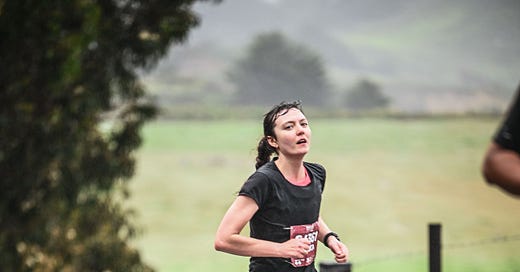

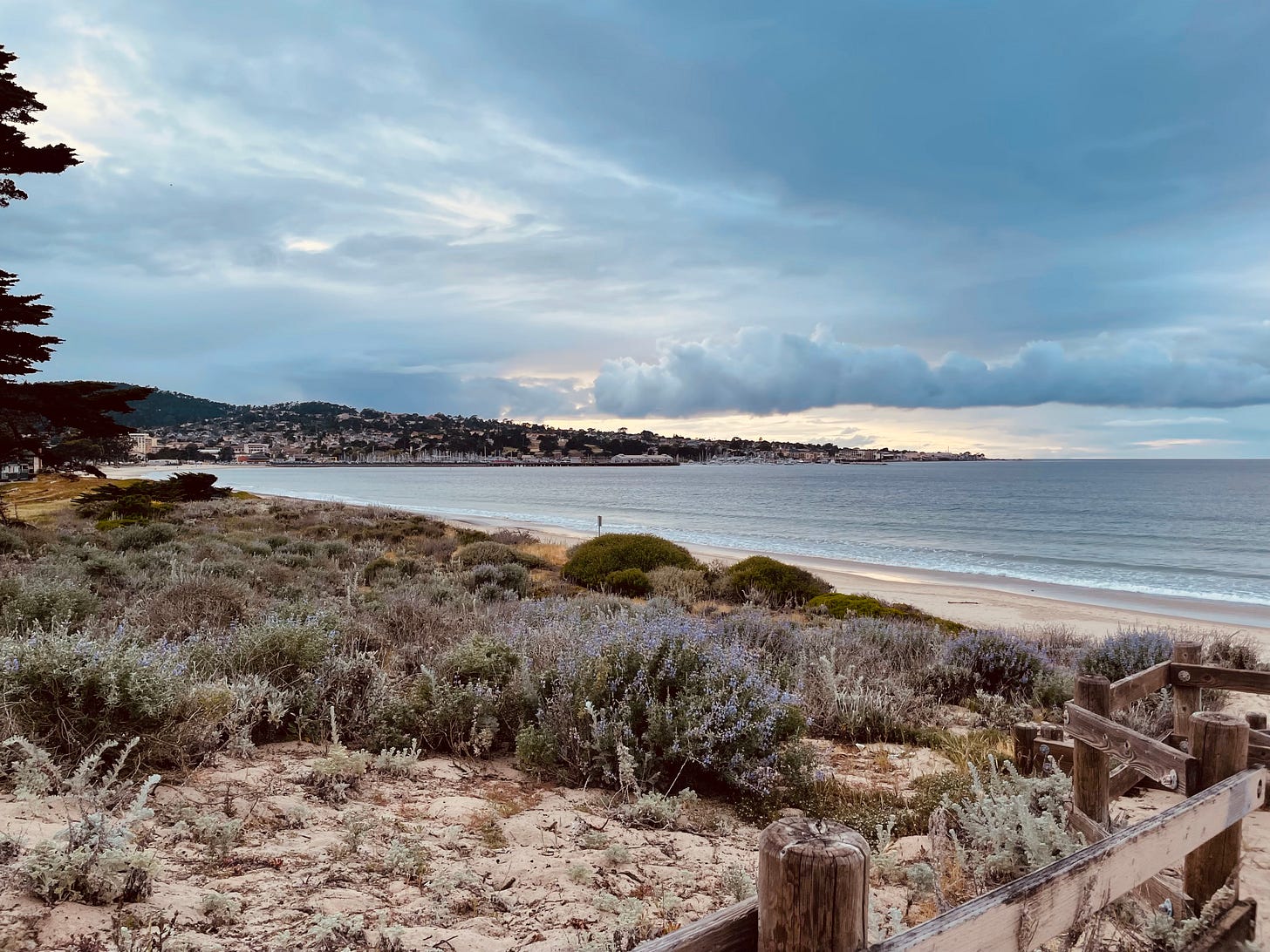
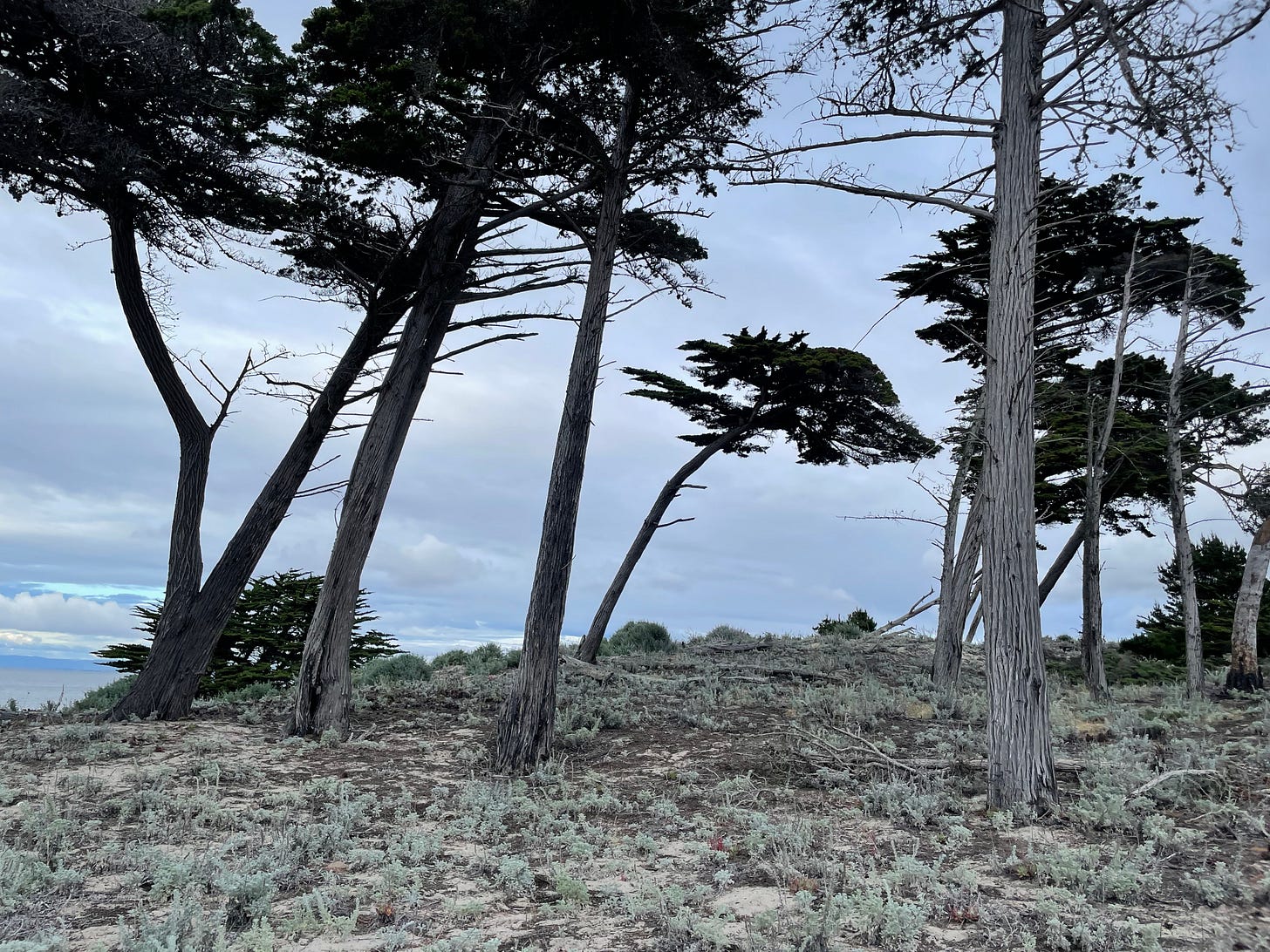



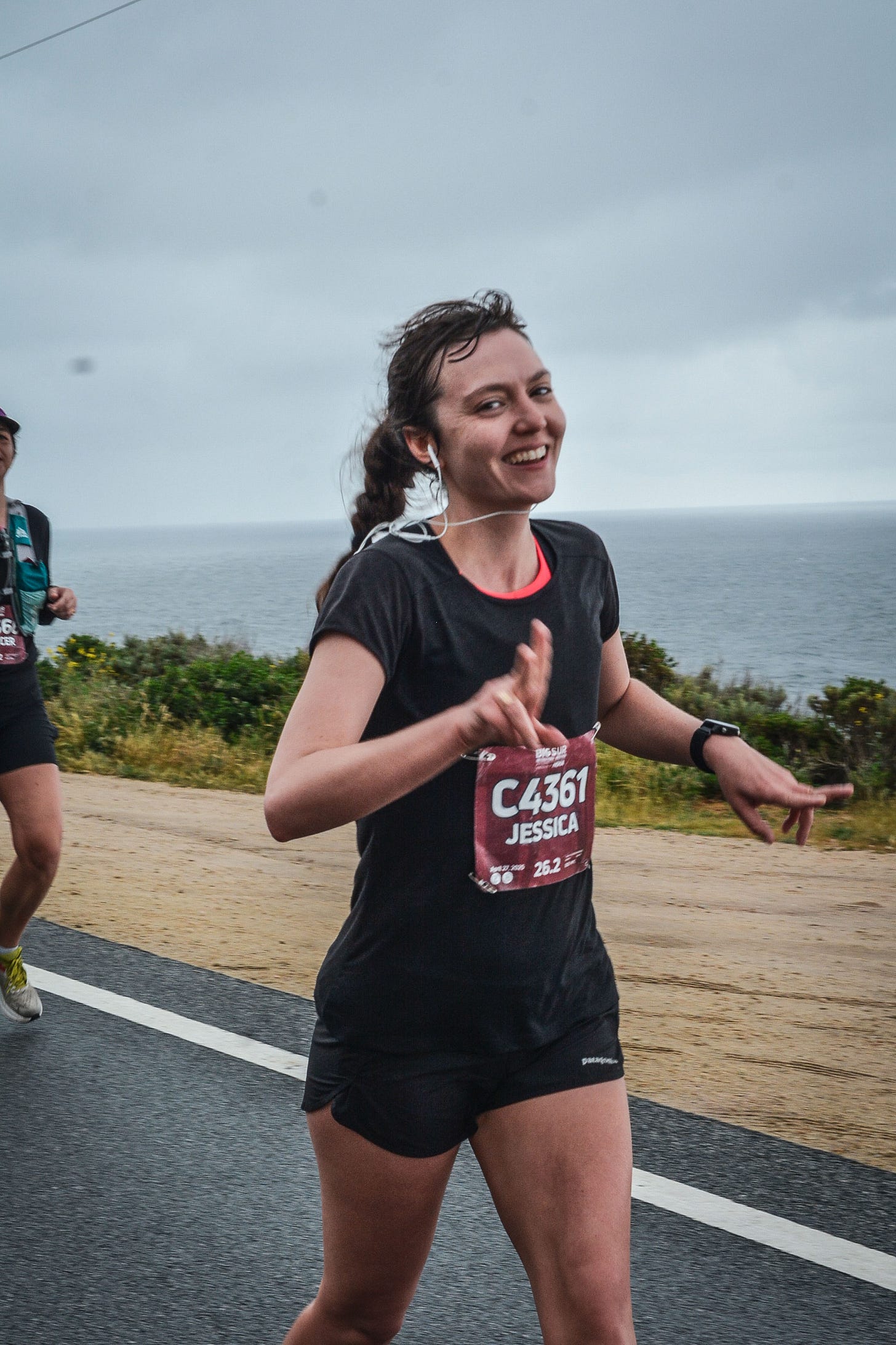
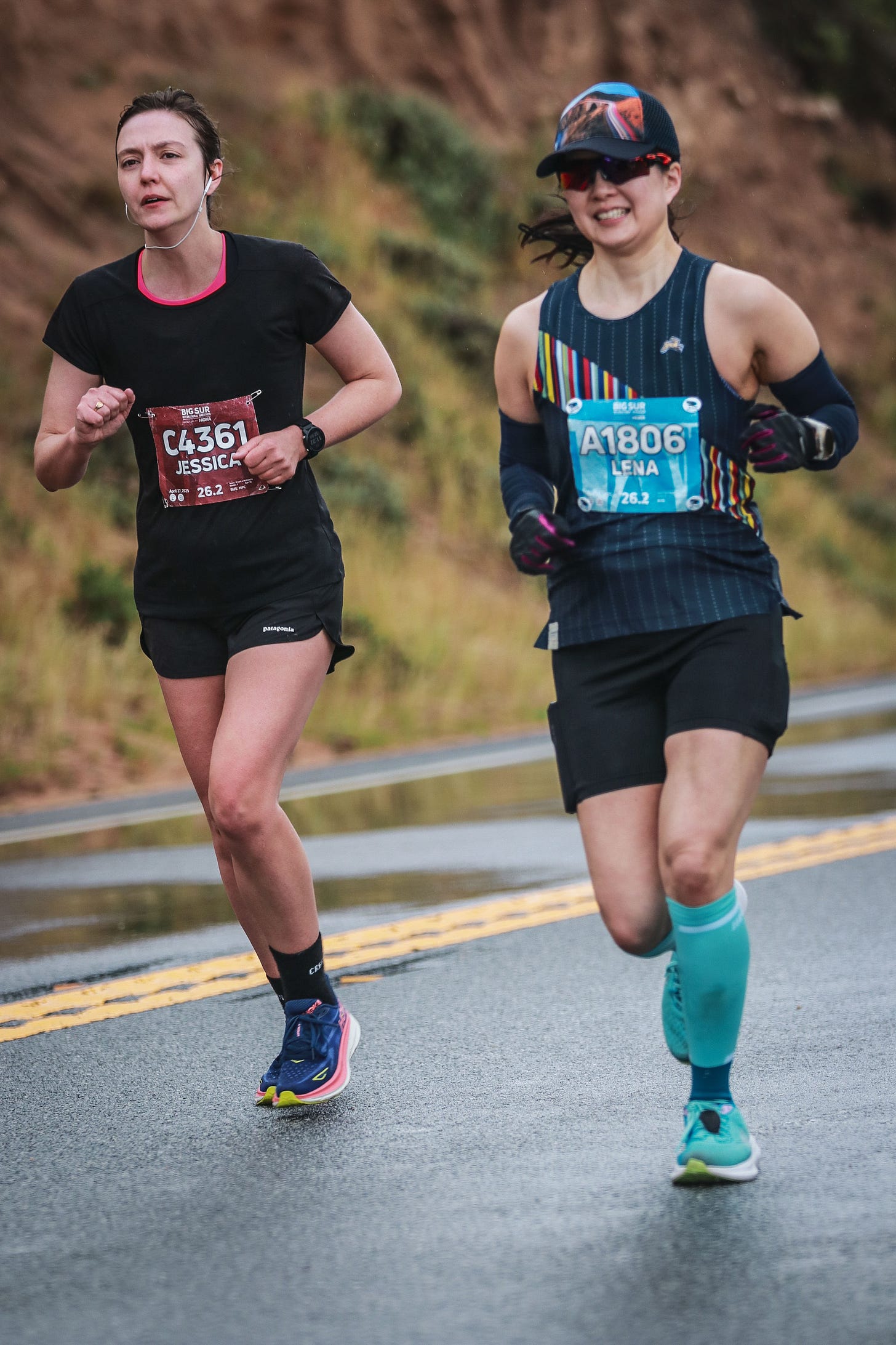
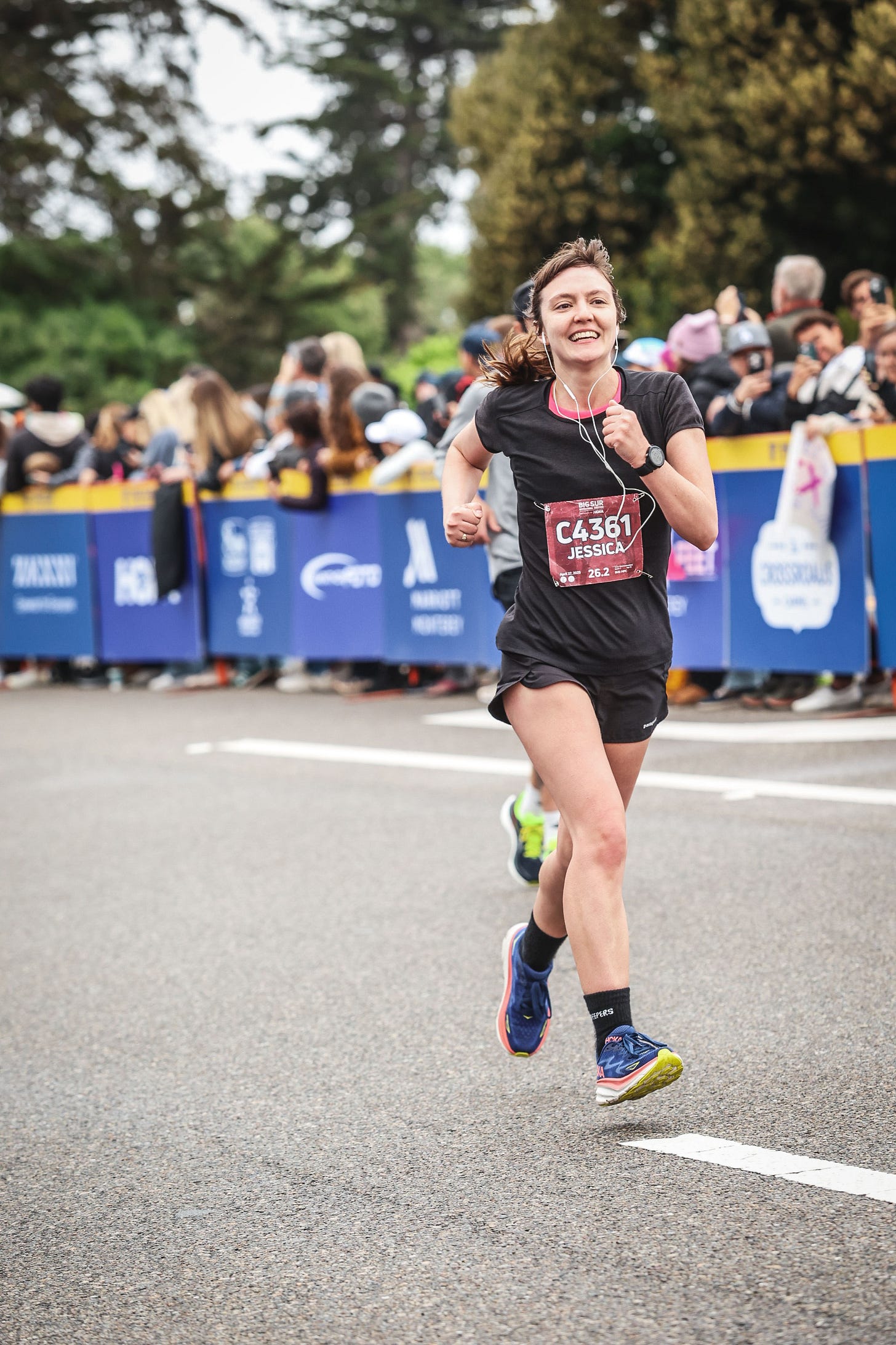
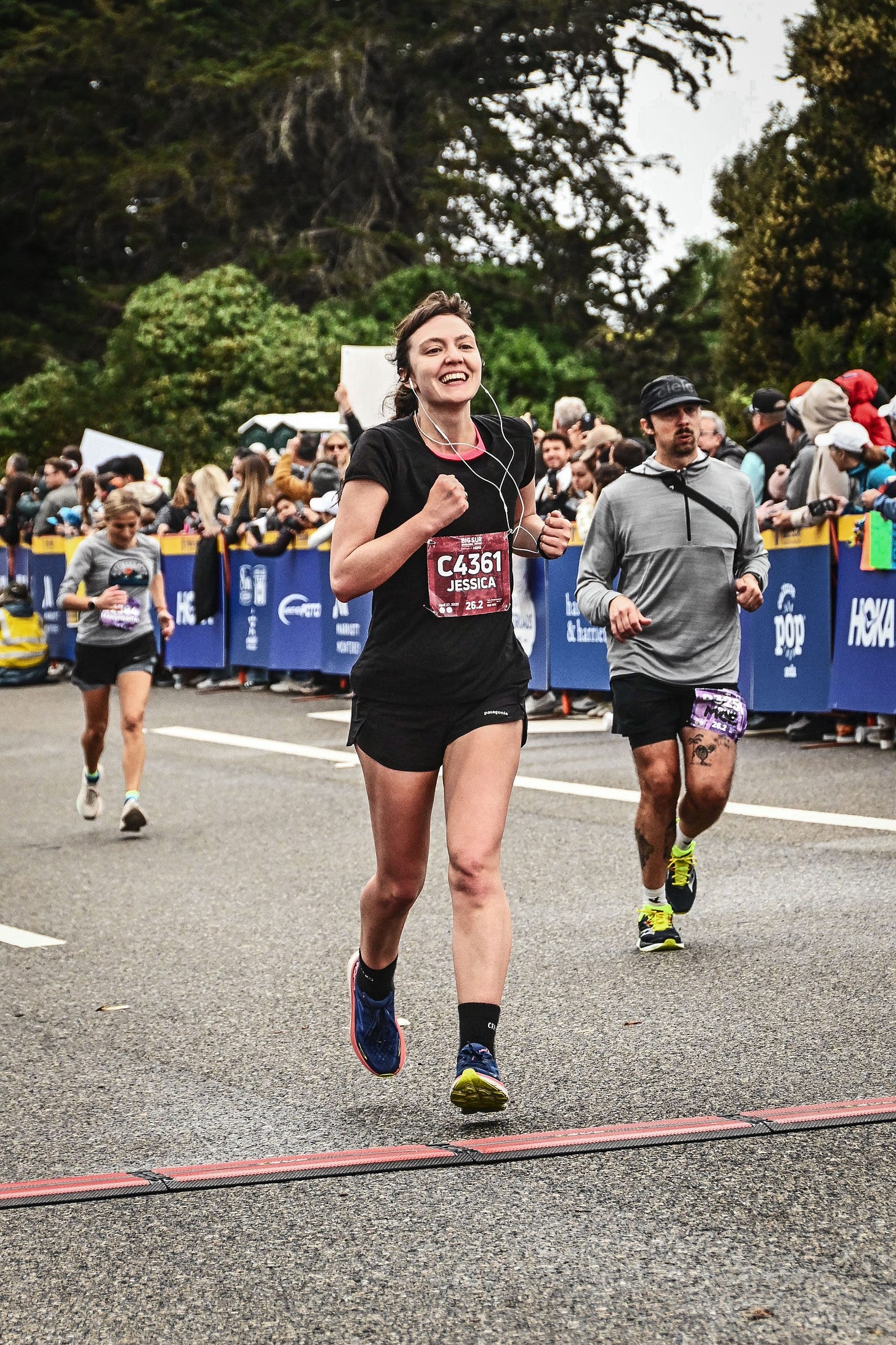
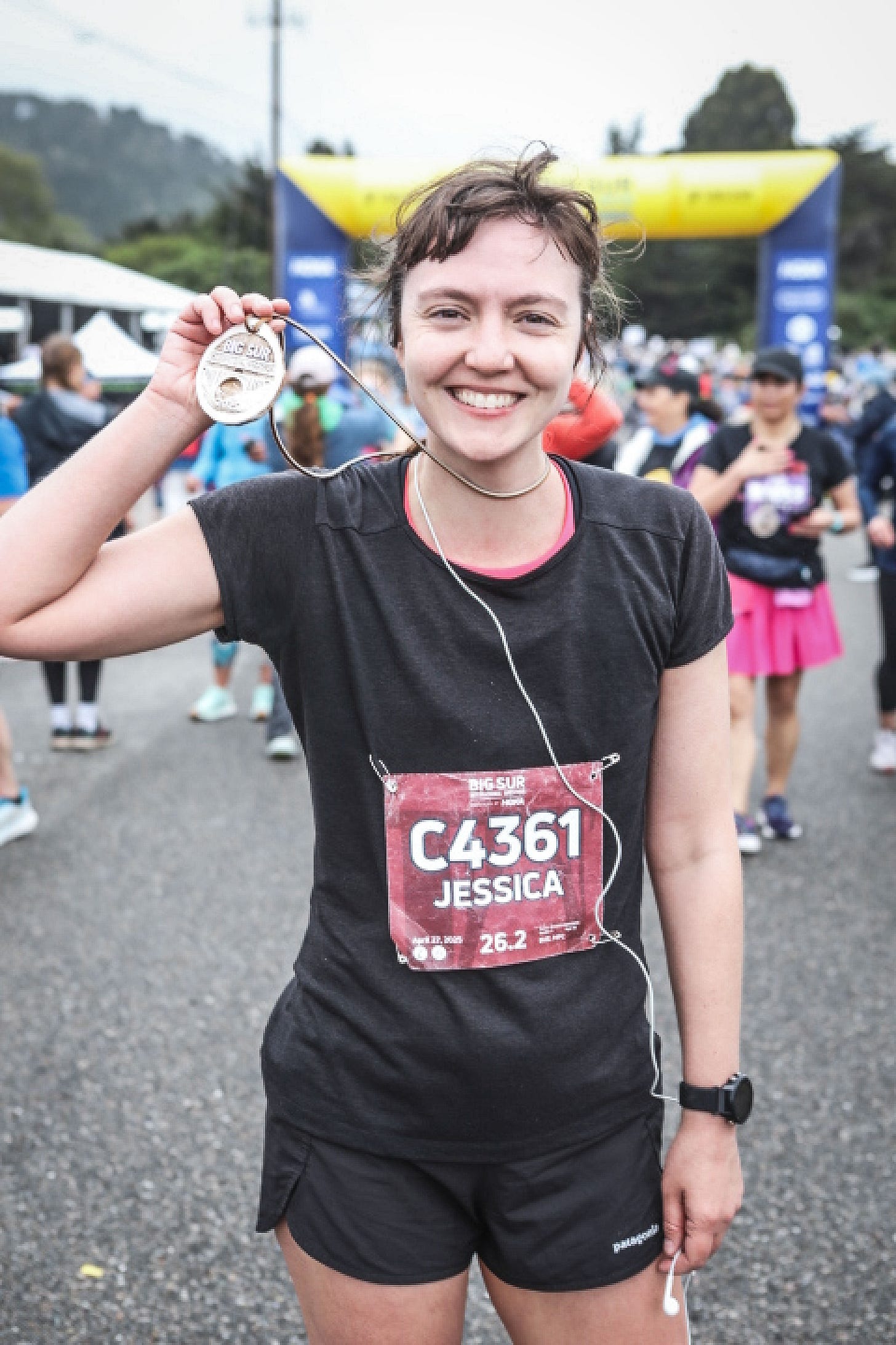
I enjoyed reading the details you included that I’ve never considered about marathons… like all the clothes on the side of the road! Thanks for taking us along on this race.
Ah what a great read, Jessica!! It brought me back to my rainy fall marathon last year. I love the details you included, it felt like we were right there with you. It was fun to read your observations of your pacing and the race itself. And your race photos are great! The finish chute smiles will always make me cry. Haha 🥹 Well done!!